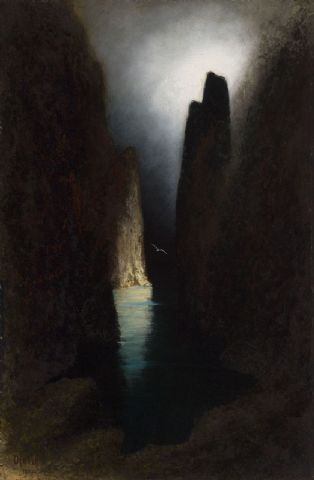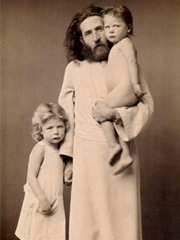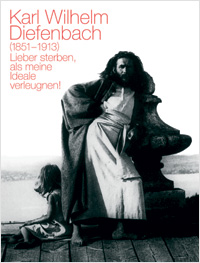

Back to naturism

That the warmer months see many Germans shedding their clothes along with their inhibitions in accordance with the deeply unerotic phenomenon known as FKK (Freikörperkultur, or “free body culture”) can be partly attributed to the lifestyle innovations of one Karl Wilhelm Diefenbach.
 Born on this day in 1851, Diefenbach was a painter of considerable
accomplishment whose works ranged from a portrait of Wagner for Bavarian
King Ludwig II to large-scale Symbolist canvasses of haunting
landscapes and elemental turmoil. Like artist Augustus John
in the Edwardian era, Diefenbach was unable to meekly conform to the
mores of his age, reacting against the bullish conservatism of the new
German Empire by calling all its social conventions into question.
Born on this day in 1851, Diefenbach was a painter of considerable
accomplishment whose works ranged from a portrait of Wagner for Bavarian
King Ludwig II to large-scale Symbolist canvasses of haunting
landscapes and elemental turmoil. Like artist Augustus John
in the Edwardian era, Diefenbach was unable to meekly conform to the
mores of his age, reacting against the bullish conservatism of the new
German Empire by calling all its social conventions into question.
 Photos
of Diefenbach in this era are uncannily redolent of 1960s hippy
commune-dwellers. Beginning in the 1880s, Diefenbach took to wearing a
caftan and sandals (or nothing at all), gave up meat, alcohol and
tobacco while espousing free love, pacifism and sun worship.
Photos
of Diefenbach in this era are uncannily redolent of 1960s hippy
commune-dwellers. Beginning in the 1880s, Diefenbach took to wearing a
caftan and sandals (or nothing at all), gave up meat, alcohol and
tobacco while espousing free love, pacifism and sun worship.
Diefenbach’s reverence for life-giving light was evident in his children’s names — Kurt-Helios, Stella and Lucidus — but allowing them to sun-bathe naked was just one of the infractions which brought him into conflict with German authorities. In 1892 he and his followers departed for Austria where they founded a utopian commune, “Humanitas”, outside Vienna. Diefenbach’s messianic tendencies were now given free rein but by the time the century closed he had been brought down to Earth by bankruptcy. He retired to Capri where he died in 1913.
Even as recent years have brought belated reappraisal of other Symbolist artists, Diefenbach was all but forgotten until a recent exhibition of his work in Munich. But if his art has gone unnoticed, the hectares of German flesh bared every summer is a tribute to his ideals.

